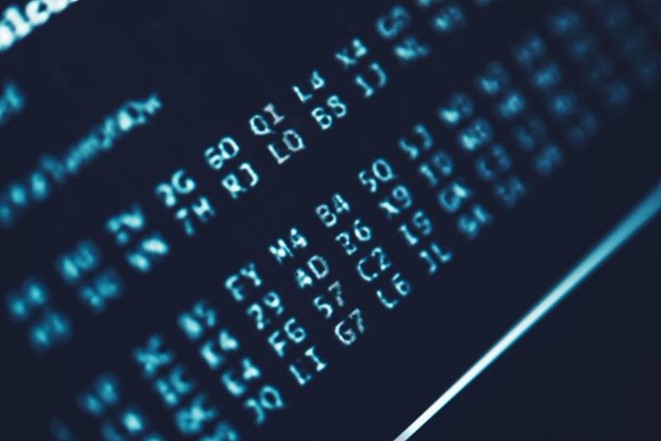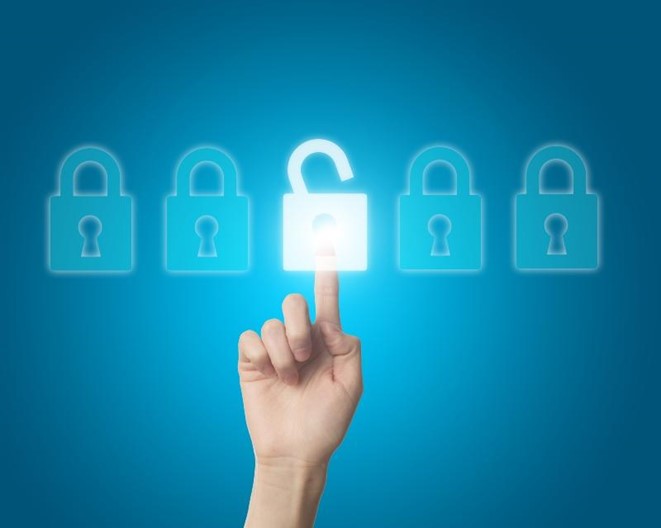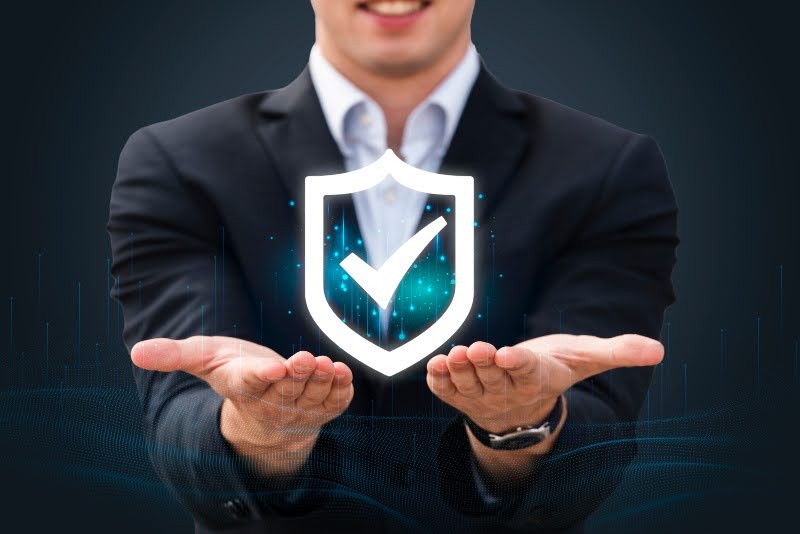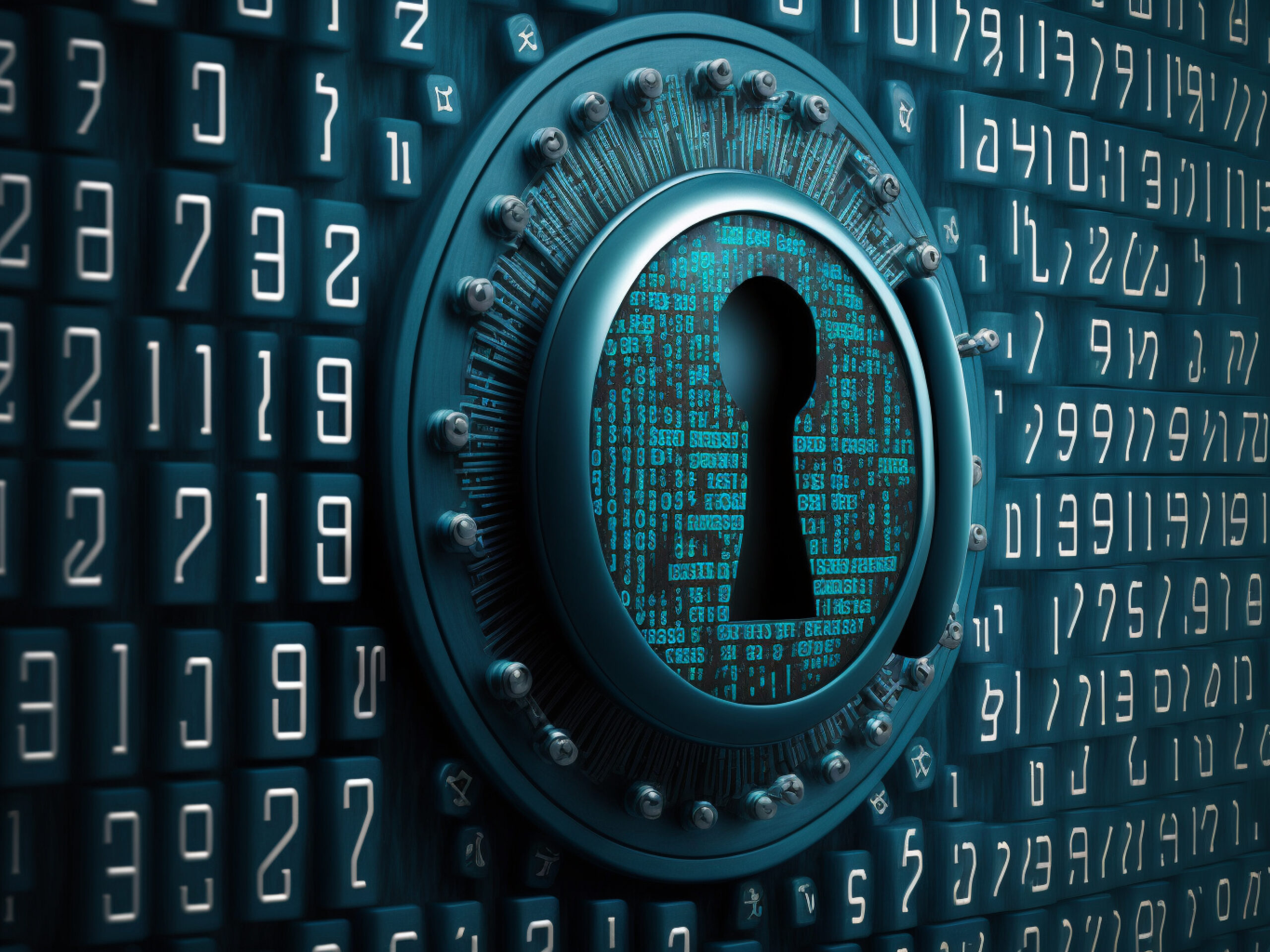The 5 Cybersecurity Trends You Need to Know
Businesses should invest in staying up-to-date with the latest cybersecurity trends to protect against threats, maintain customer trust, comply with regulations, and protect their reputation.
Importance of cybersecurity today
In today's economic and technological environment, cybersecurity has become a top priority for companies, institutions, and states.
With the digitalization of business processes and the increasing dependence on technology, ensuring information security has become essential to ensuring organizations' long-term sustainability.
Cybersecurity involves protecting a company's systems and networks against external attacks and ensuring the integrity, confidentiality, and availability of data.
This is especially relevant in a business environment, where the loss or theft of information can have severe financial and reputational consequences.
Staying on top of cybersecurity trends is a must, as cyberattacks are becoming more sophisticated and frequent. Cybercriminals exploit security vulnerabilities using various tactics, from phishing to ransomware.
Businesses need to be prepared to deal with these threats and have incident response plans.
In addition, cybersecurity is critical to complying with data protection regulations. Businesses are required by law to protect the personal information of their customers and employees. Failure to comply with these regulations can result in significant fines and damage the company's reputation.
In addition, cybersecurity is also crucial to maintaining customer trust. If customers don't trust that their data is secure, they may choose not to do business with a company. As such, cybersecurity is essential for customer retention and acquisition.
Discover the 5 cybersecurity trends
The development of technology brings with it new forms of cyberattacks and new ways to protect against them. Staying on top of each other's trends is the foundation of any effective cybersecurity strategy.
1. Increased focus on Artificial Intelligence
Artificial intelligence (AI) is revolutionizing the field of cybersecurity, emerging as an essential tool for protecting computer systems against cyber threats. As cyberattacks become more sophisticated, Artificial Intelligence offers new ways to strengthen security and prevent attacks.
Although it also represents new challenges when used to execute attacks, Artificial Intelligence's ability to analyze large amounts of data and learn from past attacks makes it a powerful tool in the fight against cybercrime.
Artificial Intelligence analyzes large amounts of data at a speed that surpasses that of humans. This allows cybersecurity tools to collect data and convert it into valuable information to identify patterns and detect gaps that may involve an attack. In addition, Artificial Intelligence learns from past attacks to prevent future threats.
Main areas of action of Artificial Intelligence in cybersecurity
One area where Artificial Intelligence is proving its effectiveness is phishing detection. AI algorithms can scan emails, the Internet, the deep web, the dark web, and social media for signs and actions of phishing.
In addition, thanks to artificial intelligence's learning and analysis capacity, the most advanced cybersecurity tools on the market can eliminate false positives in search results. Thus, the use of Artificial Intelligence guarantees the accuracy of automated tools and avoids the need for human review of the results.
However, despite these advances in protection, Artificial Intelligence also presents new security challenges. Cybercriminals are exploiting it to carry out more sophisticated and hard-to-detect attacks.
Therefore, cybersecurity professionals and solutions must stay up-to-date with advancements and trends in Artificial Intelligence.
As Artificial Intelligence continues to evolve, its role in cybersecurity will become increasingly relevant.

2. Zero Trust Security
Zero-trust security is an emerging cybersecurity trend. Its basic quality is its robust and proactive approach. This approach is based on the principle of "never trust, always verify," which means that no entity, internal or external, is considered trustworthy by default.
This trend focuses on protecting the organization's resources regardless of location. This is especially significant today when employees can work from anywhere, and data is often hosted in the cloud.
In a Zero-Trust model, each access request is authenticated, authorized, and encrypted before being granted. This applies even if the request comes from within the organization's network. In this way, Zero-Trust Security helps prevent insider threats, which are ineffectively addressed in many organizations.
In addition, Zero Trust security uses micro-segmentation to divide the network into smaller zones. This limits attackers' lateral movement within the network, making it easier to contain potential security threats.
However, implementing a Zero-Trust model can be challenging for an organization. It requires a change in mindset as it goes against the traditional approach of trusting yet verifying. In addition, it may involve a complete overhaul of the existing security infrastructure.
3. Rise in phishing attacks
Phishing is one of the most prevalent threats in the digital environment. Despite advances in cybersecurity, there has been a steady upward trend in phishing attacks in recent years, leading organizations to need more effective ways to protect themselves.
Phishing involves using social engineering tactics to trick users into revealing sensitive information such as passwords, financial data, or downloads of infected files.
Cybercriminals carry out these attacks using various methods, including spoofed emails, fraudulent websites, text messages, or social media campaigns.
You may be interested in our post→ Common types of cyberattacks.
Several factors account for the continuing trend of phishing in cybersecurity and the continuous increase in phishing attacks.
First, phishing is relatively easy to perform and can be highly effective. Second, with the rise of remote work and the use of personal devices, cybercriminals have more opportunities to launch successful phishing attacks.
Organizations use various cybersecurity measures and solutions, some of which are highly advanced, to combat phishing. These include training employees to recognize and avoid phishing attacks, using email filters to block phishing emails, and implementing two-factor authentication to protect user accounts.
The most advanced cybersecurity solutions use automation, Artificial Intelligence, and machine learning to detect and prevent phishing attacks. These tools can analyze emails, websites, social media, and the internet for signs of phishing, helping to protect users and organizations from these attacks.
4. Evolution of Quantum Computing
Quantum computing is a novel cybersecurity trend that promises to revolutionize how organizations protect systems and data.
This technology takes advantage of the properties of quantum mechanics to perform calculations at a speed and scale that are beyond the reach of traditional computers.
This computing has the potential to solve complex cybersecurity problems more efficiently. For example, it can improve cryptography, making our systems more secure.
Quantum algorithms, such as Shor's algorithm, can factor large prime numbers much faster than any classical supercomputer.
However, this same power also presents challenges. If cybercriminals gain access to quantum computers, they could use them to break the cryptography that protects our data. This has led researchers to develop post-quantum cryptography to resist attacks from quantum computers.
In addition, quantum computing can enormously improve threat detection and cybersecurity incident response. Quantum systems can analyze vast amounts of security data at a speed hitherto unattainable, identifying threats and responding to them faster and more effectively.
Although still in the early stages of development and evolution, it is indisputable that quantum computing has the potential to transform cybersecurity. On the one hand, it offers new ways to protect our systems and data, but on the other, it presents new cybersecurity challenges.
5. Security in IoT devices
The Internet of Things (IoT) has revolutionized the way we interact with the digital world. However, this massive interconnectedness has also opened new doors for cybersecurity threats.
IoT devices, which span fields from home appliances to smart industrial machinery, generate a large amount of sensitive data.
When this information is exposed, it can be used for the planning and execution of a cyberattack.
As a result, the security of IoT devices has become a critical trend in the field of cybersecurity. Enterprises are investing in robust security solutions to protect IoT devices and the data they generate.
And this is a trend in cybersecurity that will continue to evolve as IoT adoption expands. It is therefore imperative that businesses and users take proactive steps to protect their devices and data in this increasingly connected environment.
An effective IoT security strategy involves several layers of protection:
- Physical security: protection of physical devices, which should not be easily accessible for unauthorized tampering.
- Network security: Implementing firewalls and other network security measures to protect IoT devices from external attacks.
- Data Security: Protecting the data generated and transmitted through IoT devices.
- Regular updates: Keeping devices up-to-date with the latest firmware and software versions to protect against known cybersecurity system vulnerabilities.
- Security by design: IoT device manufacturers incorporate security measures from the product design phase.
- User education: Users should be aware of the operation and scope of IoT devices and the risks they have, as well as informed about security best practices, such as changing default passwords and disabling non-essential features.

Learn about our cybersecurity solution for companies
Kartos Corporate Threat Watchbots, our Cyber Surveillance platform for enterprises developed by Enthec, provides organizations with the most evolved Cyber Surveillance capabilities on the market to respond to the evolution and trends of attacks.
Using self-developed Artificial Intelligence, issue reports on the cybersecurity status of organizations and their value chains in an automated and continuous way.
An Artificial Intelligence so evolved that it allows Kartos to be the only Cyber Surveillance platform for companies capable of putting an end to false positives in search results, thus guaranteeing the degree of effectiveness of protection.
Contact us if you need more information on how Kartos can protect your business.
What is hashing: How it works and uses it in cybersecurity
Hashing is a crucial process in information security that transforms any data into a unique and fixed value, facilitating its rapid recovery and guaranteeing its integrity.
What is hashing?
Hashing is a data processing algorithm that transforms a string of text or data set into a single, fixed numerical representation. This process is done by a hash function, which generates a unique value for each distinct input, called a hash.
Hashing is commonly used in programming to store and retrieve data efficiently.
The hashing process works as follows:
- Entrance. A text string or dataset is provided as input.
- Hash function. The input is passed through a hash function, which uses a mathematical algorithm to transform the input into a unique numerical representation.
- Hash. The result is the hash, a single, fixed numerical representation of the original input.
If the hash function is good, the same input message will always produce the same output number and a small change in the message will drastically change the output number.
However, it's important to note that the features aren't perfect. There is a chance that two different messages produce the same hash, which is known as a hash collision. Despite this, good hashing functions are designed to minimize the likelihood of collisions.
Using Hash Values
Now that we know what a hash is, it's relevant to find out that hash values are instrumental in a variety of applications, including:
- Data storage and retrieval: The hashing algorithm efficiently retrieves data. In a database, hashing is used to index and retrieve data quickly. When storing data in a hash table, the hash function directly calculates the location of the data in the table.
- Data authentication: These values are commonly used to authenticate data, as generating a hash that matches the original one is very complex. In addition, any slight modification to the data creates a new hash.
- Data encryption: Hashing is used to encrypt data securely. By storing data in encrypted mode, hashing protects its integrity and confidentiality. This function associated with cryptography has made hashing a fundamental element of blockchain technology.
- Duplicate detection: Hash values can also detect duplicate data. Two datasets will likely be identical if they have the same hash value.

Characteristics of how hashing works
The fundamental characteristics of how hashing works are:
Illegibility
The hash output data, the hashes, are not readable or recognizable. The goal is to make the results difficult to decode or understand, providing greater security in applications such as cryptography and data authentication.
Continuity
A hashing algorithm can maintain a connection or relationship between the input data and the generated results. This means that the results are consistent and consistent over time, which is especially important for applications that require data integrity and security.
Speed
Speed is an essential feature of hashing. Hashing functions are designed to be extremely fast and efficient. In general, the speed of hashing depends on the algorithm's complexity and the hardware capacity used.
Determinism
This hashing feature refers to an algorithm's ability to produce results that are always the same for a specific input.
It implies that the hashing result is predictable and not influenced by external factors. Given an input, the algorithm will always produce the same hash, and therefore, if two people have the same data and use the same hash function, they will get the same hash.
Securities Collision Safety
It refers to the ability of a hashing algorithm to minimize the likelihood of collisions between different inputs.
Theoretically, a perfect hashing algorithm would produce unique values for each entry. However, in practice, collisions can occur due to the limited number of possible hash values, where different inputs produce the same hash value.
A good hashing algorithm will distribute inputs evenly across the hash space, reducing the likelihood of collisions and improving safety.
Use cases of hashing in cybersecurity
Here are some prominent use cases for hashing in cybersecurity:
File integrity verification
In cryptography, hash values are used to verify the integrity of data. By calculating the hash value of the data before and after transmission, it is possible to check whether the data has been altered during transmission.
Digital signatures
In digital signatures, the message's hash value is used as input for the signing algorithm. This allows you to verify the sender's authenticity and the message's integrity.
Secure password storage
The hashing algorithm authenticates a user's identity and securely stores passwords. When registering for an app, the user provides a password stored as a hash.
The application checks the provided password against the stored hash when the user logs in. Because the password is stored as a hash, it is very difficult for someone other than the user who generated it to decrypt it and use it.

Prevention of replay, brute force, SQL injection, and cross-site scripting attacks
Prevention of replay, brute force, SQL injection, and cross-site scripting attacks
Hashing helps prevent these types of attacks, as it is difficult for an attacker to reproduce a hash that has already been verified or generate a hash that matches the original hash. This makes it difficult to access data without being authorized.
You may be interested in our publication→ 5 cybersecurity trends you should know.
Advantages of hashing that you should know
Hashing offers several advantages over other methods of encryption and data storage:
- Speed. It is swift and efficient, based on simple mathematical operations and does not require complex search algorithms.
- Scalability. It is scalable, as it does not depend on the content's complexity, making it suitable for large amounts of data.
- Irreversibility. The hash is irreversible, which means that you cannot recover the original data from it. This provides an extra layer of security to protect sensitive data.
- Data integrity. The hashing algorithm ensures that data is not modified or altered during transmission or storage.
- Authentication. The hash of the original data can be verified by comparing it with the hash of the received data, which shows that the data has not been modified during the transmission process.
- Efficiency. Modern hashing algorithms are fast and efficient, responding to applications that require high processing speed.
- It requires no keys, secure communication, or encryption services. By its very function, hashing does not require keys, secure communication, or encryption services to protect data, so its implementation is straightforward. At the same time, it is ideal for applications that require high security.
- No dependence. Hashing does not depend on complexity, structure, language, frequency, or data categorization, which may condition its application.
If you want to improve the security of your information, find out how Kartos Corporate Threat Watchbots can help your organization. Learn about our solutions; it's time to prevent and locate any vulnerabilities!
Importance of Personal Privacy in the Digital Age
Personal privacy in the digital age is a critical aspect that requires constant attention and proactive measures on the part of people with some online activity, asset, or information.
What is personal privacy?
Personal privacy refers to an individual's ability to control information about their life and decide what data can be shared, under what conditions, when, and with whom.
Maintaining personal privacy has become increasingly challenging in a world where technology and connectivity are ubiquitous. Privacy is not just a matter of keeping information protected but of ensuring everyone has the right to decide how their information is used and who has access to it.
National and international legislation protects individuals' privacy rights, focusing on personal online privacy. These regulations are the basis of the right to personal privacy and of each person's responsibility to ensure one's privacy and to exercise and demand the necessary actions to protect it to the level that each one considers.

Characteristics of Digital Personal Privacy
Digital personal privacy is characterized by several key elements that must be formalized together to guarantee it in the terms set out by law.
- Data Control. People should be able to control what information is collected, how it is used, and with whom it is shared. This includes access to their own data and the ability to correct inaccurate information or delete information they do not wish to share.
- Transparency. Organizations that collect data must be transparent about their practices. This involves informing users about the data collected, its purpose, and how it will be protected.
- Information security. Protecting personal data is critical to preventing unauthorized access, identity theft, and other forms of abuse. Appropriate security measures, such as encryption and strong passwords, must be guaranteed.
- Informed consent. The individual must give explicit consent before personal data is collected or shared. This consent must be informed, which means that the individual must clearly understand what their data will be used for and their consent's implications regarding their privacy.
- Right to erasure. In some cases, individuals should have the right to have their data removed from databases and systems where it is no longer needed or where consent has been withdrawn.
Personal Information Privacy Concerns and Crimes in the Digital Age
The digital age has brought with it several concerns and crimes that affect the privacy of personal information. Some of the main problems to be addressed are:
Artificial intelligence algorithms
Artificial intelligence (AI) algorithms analyze large volumes of data to identify threats and make decisions. While this capability is beneficial in many ways, it also poses privacy risks. Algorithms can collect and analyze personal data without the user's knowledge or consent, which can lead to discrimination, loss of privacy, and misuse of information.

Mass privacy surveillance
Mass surveillance is the extensive collection and monitoring of data on individuals or groups by governments, corporations, or other entities. This surveillance can include data collection from telecommunications, social media, security cameras, and more.
Mass surveillance is likely to invade people's privacy and undermine trust in the institutions that collect and use this data.
Impersonation
Phishing occurs when someone steals personal information, such as names, social security numbers, credit card information, and images, to impersonate someone else.
This crime can have serious consequences, including financial loss, the need for legal defense, reputational damage, and difficulty accessing essential services.
Scams and frauds
Online scams and frauds constantly threaten personal privacy. Cybercriminals use various tactics to trick people into giving them access to their personal and financial data, including phishing, vishing (phone scams), and smishing (text message scams).
Hate crimes
Hate crimes in the digital environment include harassment, threats, and defamation directed at individuals or groups based on characteristics such as race, religion, gender, sexual orientation, or disability. Not only do these crimes violate victims' privacy, but they also have a significant impact on their emotional and psychological well-being.
Crimes against privacy
Privacy crimes include the unauthorized disclosure of personal information, such as intimate data, images, or videos, without the consent of the person concerned. It can happen through hacks, vindictive people, or even dishonest employees with access to personal data. The consequences are often devastating, affecting the victim's reputation, personal relationships, and mental health.
How to protect personal privacy
Protecting personal privacy online requires awareness of the need and a proactive approach. Some practical measures to implement such protection are:
- Education and awareness. Staying informed and up-to-date on privacy threats and best practices for protecting personal information is the first step in knowing what protection tools and routines to adopt.
- Use of privacy tools. Privacy tools, such as secure browsers, VPNs (Virtual Private Networks), and encryption software, designed to protect online data, help keep online communications and activities private.
- Social media privacy settings. It is advisable to adjust the privacy settings on all social media accounts to limit who can view and access personal information and to review and update those settings regularly. Be aware of the actual scope we seek or intend and the nature of the account (professional account versus personal accounts) and adjust the information dumped and privacy to them
- Strong passwords and multi-factor authentication. Although sometimes uncomfortable, using strong and unique passwords for each online account is essential. In addition, multi-factor authentication (MFA) should be enabled whenever possible. This adds an extra layer of security by requiring a second form of verification in addition to the password.
- Review of application permissions. Review of application permissions. Before installing an application, you should carefully review the permissions it requests and make sure that they are necessary for its operation. With this information, you should limit your apps' access to personal information as much as possible
- Monitoring suspicious activity. It is advisable to set up alerts for activities, usual or not, on financial accounts and other essential services. In addition, in the case of people of social or economic relevance, with a large amount of very sensitive data dumped on the network, it is advisable to use solutions to monitor online personal information and digital assets to detect possible privacy threats that involve their criminal use
- Be alert to suspicious emails, messages, and links. You should never open emails or messages from unknown senders or click on links that you are not 100% sure of. Cybercriminals use phishing techniques to trick people into stealing their personal information.
- Right to erasure. If someone considers that a company should no longer have his or her personal data, he or she can and should request that it be deleted. Many legislations, such as the GDPR in Europe, grant this right to individuals.
Qondar: Enthec's platform that helps you protect your privacy
Qondar Personal Threat Watcbots is the innovative solution developed by Enthec to respond to the growing need for online protection of individual personal privacy. Qondar continuously and automatically monitors people's sensitive information and digital assets to protect personal privacy and prevent criminal or harmful use.
Thanks to this solution, the protected person receives real-time alerts of leaks and public exposures of their sensitive data so that they can remediate them and prevent them from being used criminally against them.
Contact us to learn more about how Qondar can help you protect your privacy or that of relevant people in your organization.
Brand Protection: Strategies to Prevent Fraudulent Use
Brand protection is an essential component of cybersecurity that requires a proactive and multifaceted approach to protecting a brand's identity and reputation in the digital environment.
Below, we explain what it consists of and how it is relevant in today's digital environment.
What is Brand Protection?
The Brand
A brand is a distinctive sign identifying a company's products or services. It can be a name, logo, symbol, design, or a combination of these elements. In addition, the brand houses an organization's culture, values, reputation, and reliability.
Branding is essential to distinguish a company's products from those of its competitors. Still, creating a relationship of trust and loyalty with consumers is much more critical, so it is a valuable asset that needs protection.
The protection
Brand protection is a crucial aspect of an organization's cybersecurity strategy. It focuses on safeguarding the brand's identity, integrity, and reputation in the digital environment. In the digitalization age, brands face increasingly sophisticated cyber threats that aim to damage their image and trustworthiness.
Brand protection threats can take many forms, including phishing, spoofing, product counterfeiting, and creating fraudulent domains. These threats can seriously damage an organization's reputation and lead to the loss of trust of its customers and consumers. The most severe cases can lead to financial losses and legal conflicts.
Brand protection in corporate cybersecurity involves various strategies and tools. These include constantly monitoring the brand's online presence, searching for potential trademark violations, implementing robust security measures, and educating employees and customers on security best practices.
In addition, brands can work with cybersecurity professionals and use advanced technologies to proactively detect and respond to threats. This includes using artificial intelligence and machine learning to identify thefts and react quickly to threats.

Importance of Brand Protection in the digital environment
Brand protection has become fundamental for companies looking to maintain their reputation, credibility, and value in a highly competitive and ever-evolving environment.
A company's brand is one of its most valuable assets and its protection in the digital environment is crucial for several reasons:
1. Preservation of corporate identity
A company's brand is its identity in the marketplace. Protecting it in the digital environment ensures the company maintains a consistent and recognizable image across all online channels, strengthening consumer trust and fostering brand loyalty.
2. Preventing Spoofing
In the digital environment, companies are exposed to the risk of identity theft, in which malicious third parties use a brand to commit fraud, deceive customers and collaborators or damage their reputation.
Brand protection helps prevent these attacks and maintains the integrity of the company.
3. Defence against unfair competition
In a saturated digital environment, companies compete not only for customers, but also for visibility and reputation. Protecting the brand helps prevent unfair competition from taking advantage of the company's reputation and prestige to gain unfair advantages.
4. Guarantee of quality and authenticity
Brand protection in the digital environment ensures that the company's products and services are authentic and of high quality, avoiding consumer confusion and protecting the reputation built over time.
5. Legal compliance and protection of intellectual and industrial property
A company's brand is an intangible asset protected by law. Ensuring their protection in the digital environment helps to comply with legal regulations related to intellectual or industrial property and to avoid possible litigation for trademark infringement.
Consequences of Lack of Trademark Protection
The lack of brand protection in the digital environment can have several negative consequences for a company's reputation:
- Fraudulent use of the trademark: The unprotected trademark is exposed to unauthorized use by third parties, competitors, or malicious actors who take advantage of the company's reputation to market products or services that are not authentic.
- Loss of credibility: When a brand is impersonated, its customers perceive that the company is not committed to protecting its brand and the quality of its products or services and, therefore, to safeguard their safety and their rights as consumers.
- Loss of revenue: Properly protecting the brand avoids the risk of decreased demand for the company's products or services due to a loss of credibility or trust in the brand.
- Loss of capital and resources: To reverse the consequences of fraudulent brand use, the organization must invest in advertising and marketing campaigns to regain consumer trust and restore brand reputation.
- Loss of control over online presence: Brand impersonation causes loss of control over the company's online presence, which can negatively affect its perception and credibility in the market.
- Loss of value: Reputation and brand value are intangible assets critical to a company's success and affect its overall valuation.
Common Threats to the Brand
As we've noted above, threats to brand protection can take many forms.
Social Media Fraud and Scams
Brand impersonation is frequently used to deceive customers and consumers on social media through fake campaigns, to cause them harm, usually financially.
This type of fraudulent brand use usually ends with complaints by those affected to the company, which is forced, on the one hand, to prove the impersonation and, on the other hand, to carry out campaigns to warn consumers of fraud and recover the brand's prestige.
Cyberattacks on business infrastructure
A large number of successful cyberattacks begin with corporate impersonation. Through this impersonation, the cybercriminal manages to deceive an employee or collaborator with access to the business infrastructure.
Once the cybercriminal is inside the system, thanks to this fraudulent use of the brand, the cyberattack is consummated.
Phishing and impersonation
Phishing is a social engineering technique that uses spoofed emails and websites that mimic legitimate brands to deceive consumers, employees, partners, and suppliers and obtain sensitive information.
Due to its high success rate, phishing is one of the most commonly used techniques by cybercriminals today. With the incorporation of new technologies, such as Artificial Intelligence, into the planning of cyberattacks, phishing is becoming more sophisticated and challenging to detect. Brand protection has, therefore, become a key strategy of corporate cybersecurity.

Fraudulent use of logos
The fraudulent use of exact copies or almost indistinguishable versions of brand identity elements, such as isotypes or logos, in the digital environment causes reputational and economic damage.
These copies are used by cybercriminals to carry out scams or to build businesses cloned from the original outside the law and with inferior qualities, whose activity ends up harming the company.
Squatting
These types of cyberattacks involve the company's domain, which is another element of the brand. Squatting consists of registering domains that simulate a brand name for fraudulent purposes.
Among squatting, it is expected to find registered domains very similar to the original but with some almost negligible changes. Typosquatting is a variant that takes advantage of common typos among users when typing a domain to create one that contains them.
On the other hand, we highlight system vulnerabilities in cybersecurity, which are as important as threats.
Strategies to Protect the Brand
To protect the brand, an organization must implement several strategies that combine legal and cybersecurity elements.
Legal Strategies
Regarding legal strategies, we highlight:
- Brand registration: Obtaining the rights to a trademark is one of the best forms of protection. Once registered, any infraction can be dealt with harshly legally.
- Legal actions: When infringement persists, legal action must be taken to protect the trademark and stop fraudulent use. This can involve a protracted legal battle, primarily if the violator operates from another country.
Cybersecurity Strategies
As cybersecurity strategies, at Enthec, we highlight the following:
- Continuous monitoring: It is essential to actively monitor the brand's presence online on an ongoing basis to detect potential counterfeiting. Monitoring tools can help track e-commerce platforms, websites, online stores, social media, and search engines. This includes monitoring brand mentions on social media, forums, blogs, and other online channels.
- Domain analysis: It is essential to review and monitor domains and subdomains related to the brand to identify potential squatting cases. Acquiring domains similar to the original can be a sign of fraudulent use of the brand.
- Takedows: If trademark infringement is detected, it is critical to react immediately. Sending a cease and desist order through a corporate attorney is the first step of the takedown action, which is imperative to stopping fraudulent activity.
- Use of advanced technologies: Advanced technologies, such as artificial intelligence and machine learning, are most useful for detecting and responding proactively to fraudulent brand uses.
- Visual identity care: Maintaining a coherent and consistent visual identity, including the brand's logo, helps cybersecurity tools identify potential fraudulent uses.
To stay up-to-date on cybersecurity, check out our post→ The 5 Cybersecurity Trends You Should Know.
The Role of Kartos by Enthec in Brand Protection
The continuous and automated monitoring of our Kartos Corporate Threat Watchbots platform focused on social media intelligence, and DNS health allows organizations to detect, track, and deactivate phishing, fraud, and corporate identity theft scams. Customers or employees are targeted at a specific segment of the general public to steal credentials, obtain confidential information or spread malware.
Kartos by Enthec performs brand protection through:
- Early detection of potential phishing, fraud and scam campaigns from different channels: squatting, social media and subdomains.
- AI analysis of the phishing, fraud or scam campaign using the official profile generated and all its infrastructures, with reliable proof of these in different countries.
- Viewing of the campaign and its infrastructures, with transfer of information on all the IPs, domains and URLs necessary to cancel the campaign and providing screenshots of the final URLs.
- Continuous monitoring for the control and follow-up of the entire campaign and all its infrastructures until it is closed.
If you need to know more about how Kartos can protect, discover our solutions or contact us





